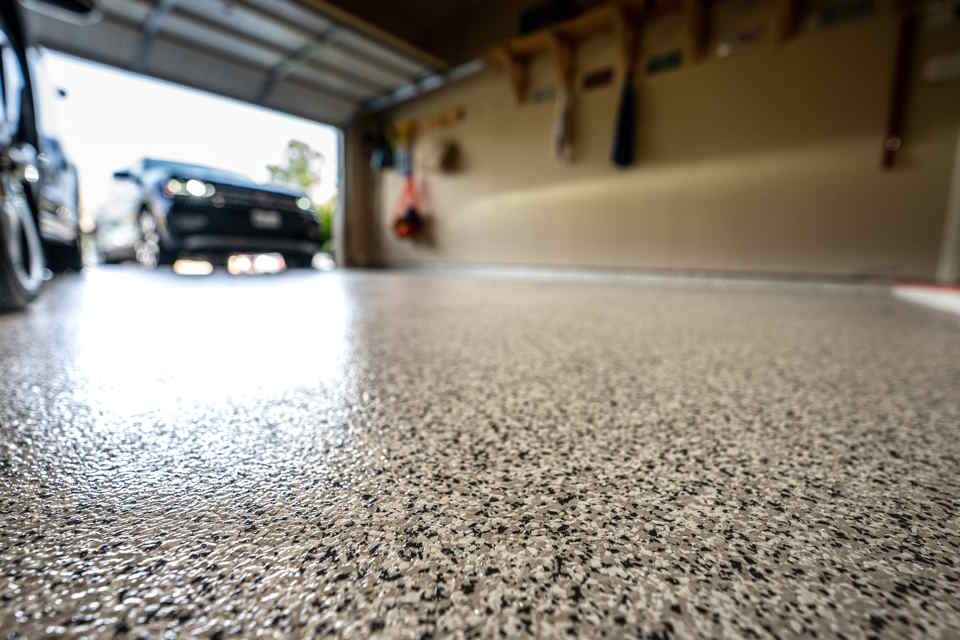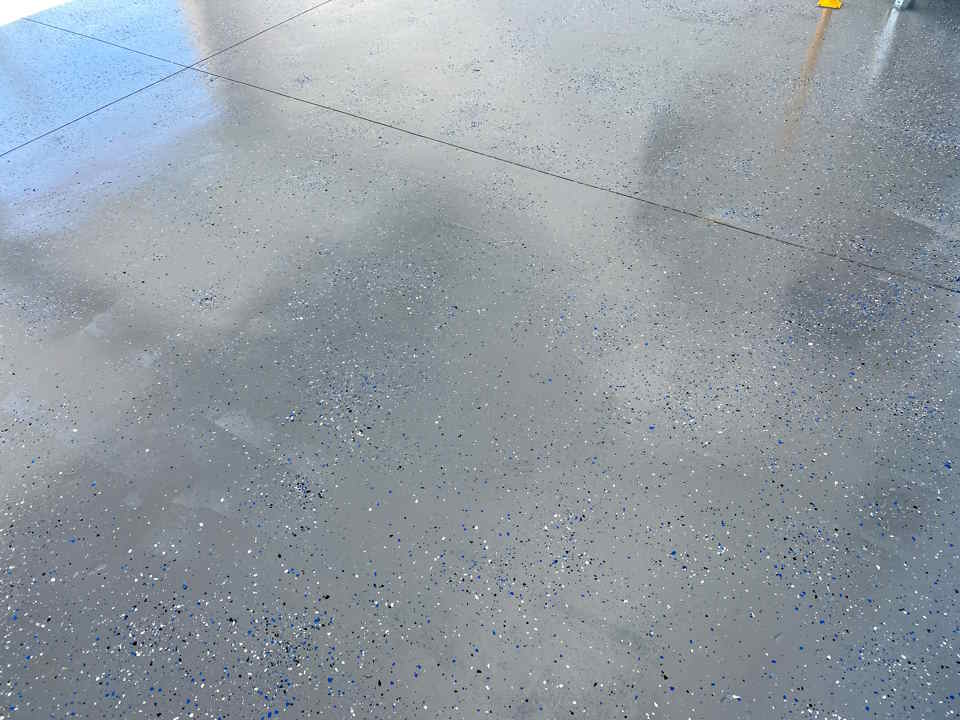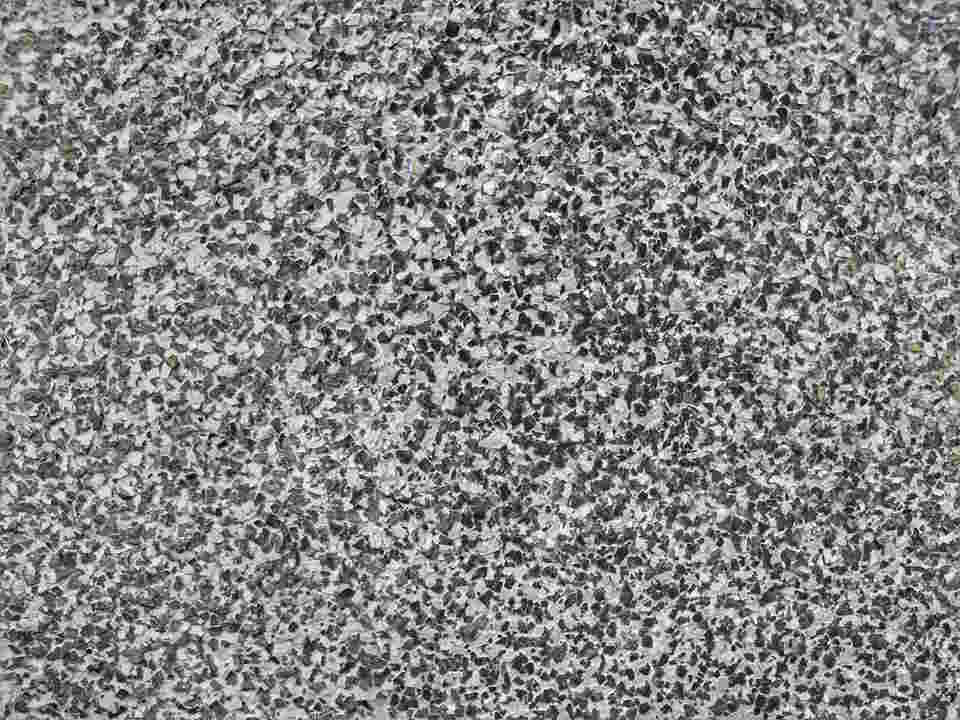Introduction
Polyaspartic floor coating is a type of floor coating that is known for its durability and resistance to chemicals, abrasion, and UV rays. It is a popular choice for garage floors, showrooms, warehouses, and other high traffic areas. It is a 100% solid coating system that is made of a combination of aliphatic polyurea and a polyaspartic ester. Polyaspartic floor coatings can be clear or pigmented and can be used as a topcoat for concrete surfaces, vinyl, tile, and other flooring systems.
- Polyaspartic coatings cure much faster than epoxy coatings.
- Polyaspartic coatings produce less odor compared to epoxy coatings.
- Polyaspartic coatings offer better UV stability than epoxy coatings.
How Does Polyaspartic Floor Coating Work?
Polyaspartic coatings are applied in a multi-step process that includes surface preparation, application of the primer and topcoat, and curing. The surface to be coated is first cleaned and degreased to ensure proper adhesion. The primer is then applied to the surface, followed by the topcoat. The topcoat is usually self-leveling and can be textured or finished to provide a non-slip surface.
Polyaspartic floor coatings are a great alternative to epoxy coatings because they offer many benefits such as faster curing times, better UV stability, and less odor. They are durable, resistant to abrasion, and easy to maintain. So, polyaspartic coatings are a great choice for any high traffic area that demands a durable, aesthetically pleasing, and long-lasting floor coating.
Is Polyaspartic Coating Better Than Epoxy?
When it comes to choosing a coating for your flooring system, you would want to choose the best option that meets your needs. Two of the most popular coatings in the market today are polyaspartic and epoxy coatings. But which one is better? We will explore the advantages of choosing a polyaspartic coating over an epoxy coating.
Durability
- Polyaspartic coatings are known to be four times more durable than epoxy coatings. They can tolerate heavy traffic, extreme temperatures, and impact without chipping or cracking.
- Epoxy coatings, on the other hand, can be prone to cracking and peeling when exposed to high temperatures and heavy traffic.
Installation Time
- Polyaspartic coatings have a quick curing time, which means they can be installed in just one day. This is a significant advantage for commercial and industrial flooring systems where downtime must be minimized.
- Epoxy coatings typically require longer curing times and may take several days to complete installation.
UV Resistance
Polyaspartic coatings have excellent UV resistance, making them an excellent choice for outdoor applications. Epoxy coatings tend to yellow and chalk due to prolonged exposure to sunlight.
While epoxy coatings have been a popular choice for flooring systems, polyaspartic coatings provide several advantages over their epoxy counterparts. Polyaspartic coatings have superior durability, quick installation time, and excellent UV resistance compared to epoxy coatings. These benefits make polyaspartic coatings a more attractive option for commercial and industrial flooring systems.
What Is Polyaspartic Coating Disadvantages?
Polyaspartic coating is an advanced type of floor coating that has been gaining popularity among homeowners and business owners in recent years. While it offers many benefits, such as quick installation and high durability, it is important to also consider its drawbacks. So, what are the disadvantages of polyaspartic coating?
Firstly, the cost of polyaspartic coating can be higher than other types of coatings, such as epoxy and concrete stains. Because it is a newer technology and requires specialized equipment, it can be more expensive to install. Additionally, if the surface to be coated requires extensive preparation, this can also drive up the overall cost.
Another disadvantage of polyaspartic coating is that it has a shorter pot life than epoxy. Pot life refers to the amount of time a coating can be mixed and applied before it begins to harden and become unusable. Polyaspartic has a shorter pot life than epoxy, meaning that it must be applied more quickly and in smaller sections to avoid problems with the final finish.
Lastly, polyaspartic coating can be more difficult to install than other types of coatings. Although it can be applied quickly, it requires a skilled technician who knows how to handle the material and apply it evenly. This means that not all flooring contractors may offer polyaspartic coating services, and those who do may charge a premium for their expertise.
While there are some disadvantages to polyaspartic coating, it is still a highly effective and durable type of floor coating. By considering its drawbacks, you can make an informed decision about whether it is the right choice for your home or business.
Is Polyaspartic Cheaper Than Epoxy?
When it comes to choosing a coating for your floors, cost is one of the most important factors to consider. A popular choice for many homeowners and businesses is epoxy, but in recent years, polyaspartic coatings have gained popularity. One of the biggest questions people ask when considering the switch is whether polyaspartic is cheaper than epoxy.
In general, polyaspartic coatings tend to be more expensive than epoxy coatings. This is because they are a newer technology and typically have higher performance benefits. However, the cost of each can vary depending on the specific product and the location where it’s purchased.
While epoxy coatings are often cheaper upfront, polyaspartic coatings can save you money in the long run. Polyaspartic coatings cure faster than epoxy, which means you won’t have to shut down operations for as long if used in a commercial setting. They also have a longer lifespan and require less maintenance, which can save you money on repairs and replacements.
So while polyaspartic coatings may cost more at the outset, they can provide long-term cost savings. Ultimately, the decision between epoxy and polyaspartic coatings depends on your budget, the performance benefits you’re looking for, and the specific application of the coating. It’s important to carefully weigh these factors before making a decision.
How Long Do Polyaspartic Floors Last?
If you’re thinking about installing a polyaspartic floor coating, one question you’re likely to have is, “How long do polyaspartic floors last?” It’s a good question, as durability is a key factor to consider when choosing a flooring material. The answer, as with many construction-related questions, is, “It depends.”
One factor that will impact the lifespan of your polyaspartic floor is the quality of the installation. If the coating is applied incorrectly, or if the prep work isn’t done properly, the floor may not last as long as it could. That’s why it’s important to work with a reputable contractor who has experience with polyaspartic coatings.
- Another factor to consider is the level of foot traffic your floor will receive. If you’re installing a polyaspartic coating in a commercial or industrial space where heavy machinery or equipment will be moving around, the floors may not last quite as long as they would in a residential setting.
- The environment your floor is in can also impact longevity. Exposure to extreme temperatures or chemical spills can take a toll on most flooring materials, including polyaspartic coatings.
With those caveats in mind, what is a typical lifespan for a polyaspartic floor? Again, the answer depends on a variety of factors, but in general, you can expect a well-installed and well-maintained polyaspartic floor to last anywhere from 5 to 20 years. This is on par with the lifespan of other durable flooring materials, such as concrete or ceramic tile.
To extend the lifespan of your polyaspartic floor as much as possible, it’s important to take good care of it. This means following the manufacturer’s recommendations for cleaning and maintenance, using mats or rugs in high-traffic areas or places where spills are likely to occur, and addressing any repairs or touch-ups as soon as they’re needed.
While the lifespan of a polyaspartic floor coating will vary depending on a number of factors, with proper installation and maintenance, you can expect your new flooring to provide many years of service.
Is a Polyaspartic Floor Slippery?
When it comes to choosing a floor coating, one of the most important factors to consider is safety. No one wants a slippery, hazardous surface that can cause accidents and injuries. This is especially true for commercial and industrial spaces where heavy machinery, vehicles, and foot traffic can make the floors more slippery. That’s why many people wonder if a polyaspartic floor coating is slippery or not.
The good news is that polyaspartic coatings are not inherently slippery. In fact, they can provide excellent slip resistance when properly applied and textured. Polyaspartic coatings can be customized to meet your specific needs, with different levels of slip resistance depending on your requirements.
- One of the factors that can affect slip resistance is the type of additives used in the coating.
- For example, adding aluminum oxide particles can increase traction and grip, making the surface less slippery.
- Another important factor is the texture of the surface.
A smooth, glossy surface can be more slippery than a textured or matte surface that provides more grip. That’s why it’s important to choose the right texture and finish for your specific application based on your needs and preferences.
A polyaspartic floor coating can be an excellent choice for a safe, durable, and attractive floor. With customizable slip resistance and texture options, you can create the ideal surface for your specific application. Whether you own a garage, showroom, workshop, or industrial facility, a polyaspartic coating can provide the protection, aesthetics, and safety you need.
Is Polyaspartic Floor Coating Worth It?
Polyaspartic floor coating is a type of flooring solution that has been gaining popularity in the last few years. It is a great flooring option for those who want the most durable and high-performance flooring system. Polyaspartic floor coating offers a range of benefits that make it a popular choice for homeowners, business owners, and construction companies.
One of the most significant advantages of polyaspartic floor coating is that it is long-lasting, especially when installed and maintained correctly. It can withstand heavy traffic, harsh weather conditions, and chemicals, which is why it is often used in commercial and industrial settings. Additionally, polyaspartic floor coating is low maintenance, so it can save you time and money in the long run.
- Another significant benefit of polyaspartic floor coating is that it can be installed relatively quickly. It can be applied in just one day, which means you can have a brand new floor in a matter of hours.
- Polyaspartic floor coating is also slip-resistant, making it a safe choice for any environment. The textured finish provides a good grip on the surface, which can reduce the accidents in busy areas.
The cost of polyaspartic floor coating also varies depending on many factors, including the location, the size of the area, and the condition of the surface. However, it might be more expensive than some traditional flooring systems like epoxy coating. Still, it is worth it, considering the long-term benefits and durability of polyaspartic floor coating.
In conclusion, polyaspartic floor coating is a versatile and robust flooring solution that is suitable for various applications. The level of durability and protection it provides makes it a valuable investment. While the initial cost may be more expensive than some other types of flooring, the long-term cost savings make it a worthwhile investment for any property owner who wants to ensure their floors last for years to come.



